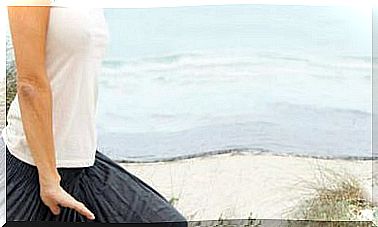Equine Therapy And Other Animal Therapies In Children: How They Help
Equine therapy is a method that has the horse as its protagonist and is used by professionals to solve needs in children and adults. In a therapeutic or educational way, it favors the help in rehabilitation of different areas. Other TACA therapies can also help children.

Children who have some type of emotional, cognitive, physical, or behavioral problem can benefit from TACA or animal-assisted therapy.
“The purpose of this therapy is relational and of bond between both in order to promote the well-being of the child”, explains the therapist Enrique Moreiras Ingelmo, who has co-directed the A Chaira equine therapy center in Ourense.
Different publications, including several reports from the A Chaira center, confirm the benefits of the child’s contact with equines:
- Improvement of stress and anxiety.
- It helps to create healthy friendships and allows you to live in a more natural and respectful way with the environment.
- Improves emotional satisfaction and self-confidence.
- Improves attention span and self-control of emotions.
- Stimulates the respiratory and circulatory systems.
- Regulates muscle tone.
- Increases agility and muscle strength.
When can horse therapy help?
The hippotherapy is a method that features a horse and used by professionals to meet needs in children and adults. In a therapeutic or educational way, it favors help in the rehabilitation of different areas.
- “There are programs for the treatment of behavioral disorders, developmental disabilities, brain injuries, post-traumatic stress disorders, autism or learning difficulties, among others,” says psychologist and trauma specialist Yolanda Álvarez Alén.
- It is also linked in the case of children who have suffered situations of helplessness or parental neglect. “The TACA used as a complementary intervention to psychological support therapy, has documented in numerous cases how the” child-animal “interaction generates positive results in the way the minor interacts”, explains the specialist.
According to psychologist Yolanda Álvarez Alén, animal-assisted therapy helps with the symptoms of hyperarousal typical of PTSD (Post Traumatic Stress Disorder), reducing anxious arousal and guiding children to establish a secure base in the present.
“Therefore, therapy animals act as an emotional support that facilitates emotional regulation and allows creating the appropriate climate in psychological therapy in the case of painful traumatic experiences,” explains this psychologist.
The therapeutic activities of the Celanova center directed by Moreriras aimed to work in an integral way the capacities of the users at all their levels: cognitive, emotional, physical and social, to improve the personal process.
“The participation with the co-therapists, the horses, was active. Among the users we also had mentally and physically disabled people, from children to adults (down syndrome, cerebral palsy, autism, bipolarity, etc.) ”, says the former director of the center.
A therapeutic option for children with autism
Although nowadays there is not much evidence about its efficacy, some studies have been found that show the socializing role of TACA.
Specifically, a study carried out at the University of Basel shows that during therapy with animals, patients increased their social behaviors, positive emotions, and verbal and non-verbal communication. “An improvement in mood was also demonstrated thanks to the interaction with animals,” explains psychologist Yolanda Álvarez.
Perhaps for this reason children with autism spectrum disorders benefit from animal-assisted therapy. “The obstacles they encounter in relationships are marked by their own communication difficulties. They do not recognize their feelings and present alterations in language and speech, ”explains Álvarez.
Currently, programs are being developed for these children with animals such as dogs, horses and even alpacas.
“Animal-assisted therapy is also used in the treatment of children with acquired brain injuries who have difficulties in the social sphere, when it comes to communicating. Contact with these animals generates a response from the parasympathetic nervous system that manages to calm and facilitate the relationships of these children with their environment ”, says the professional.
Connection with nature and mindfulness
The therapist Enrique Moreiras emphasizes that this therapy also allowed them to relate to nature in a sacred act of Mindfulness (full mental concentration) ”. “In contact with the horses, the children take walks through the forest, observe the oaks, century-old birches, perceive the sounds of nature, birds, the wind, grasshoppers, butterflies …”
As this therapist explains, paraphrasing a few lines from the book, The horse as facilitator in the teaching-learning process of the child with ADHD by Juan Vives Vilarroig, the extreme sensitivity of the horse to environmental stimuli means that we have to interact with them in a consciously relaxed and coherent way with our thoughts (stop, think and act).
The child, in relation to the horse, establishes a more relaxed connection with nature. “They sit down to eat blackberries, to drink from the fountains, they can jump, roll on the grass or sit down to rest in the shade,” Moreiras explains.









